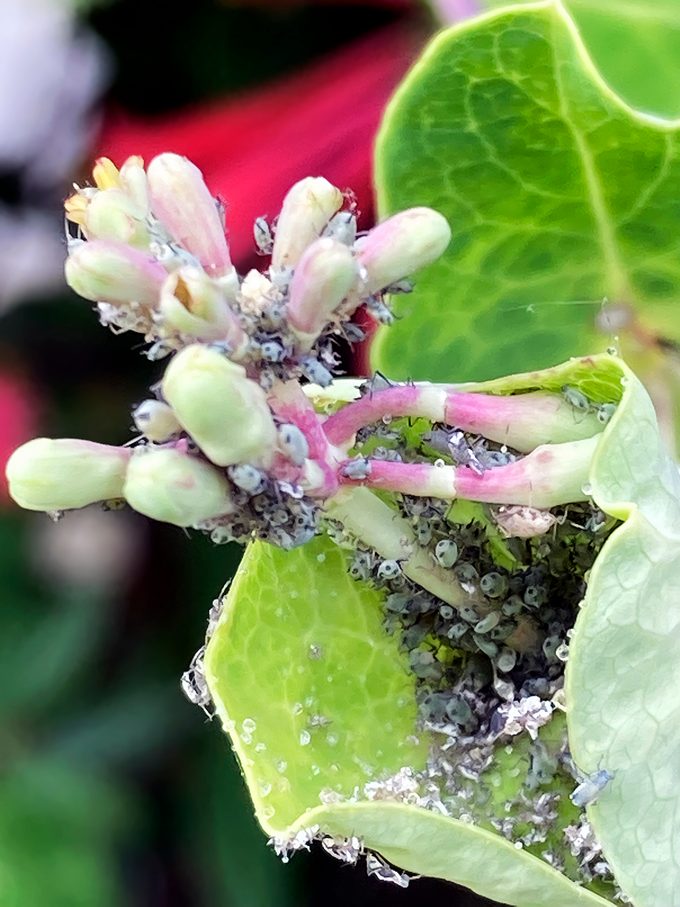Say goodbye to aphids in your garden! Follow these easy tips from a garden expert to take care of aphids on milkweed plants.
How to Get Rid of Aphids on Milkweed Plants
Aphids on Milkweed

“My milkweed plants have curly leaves and deformed flowers. What went wrong?” says Susan Nowicki Woodridge, Illinois.
Horticultural expert Melinda Myers says, “Aphids are a common milkweed pest. They look like tiny yellow specks with black legs and are often found by the dozens clustered near the plant stem. Milkweed aphids suck plant juices and excrete the excess as a clear, sticky substance called honeydew. Their feeding can cause leaves to curl and, in some instances, distort the shape of the flowers.
A black fungus often grows on the honeydew as well. This does not directly harm the plant, but in severe cases it can prevent sunlight from reaching the leaves.”
Should gardeners remove milkweed bugs?

Sometimes patience is your best defense. Melinda explains, “Consider waiting for natural predators like lady beetles, parasitic wasps or green lacewings to move in and eat the pests. Lady beetles have an aphid eating reputation for good reason. Give nature a hand, if needed, by dislodging the aphids with a strong blast of water from the hose. Or you can pick them off by hand. Organic controls like insecticidal soap can be used, but they will harm any monarch eggs and caterpillars you are trying to support.”
Next, check out more natural ways to eliminate garden pests.
Aphids on Honeysuckle Vine

“My Major Wheeler honeysuckle vine got infested with these tiny gray bugs or eggs. What are they?” asks reader Susan Huffington of New Castle, Delaware.
Melinda says, “Aphid insects are feeding on your plant. They have a piercing, sucking mouthpart to stab leaves or stem surfaces and suck up plant sap. The aphids then secrete the excess as a clear sticky substance called honeydew. These insects are typically not a common problem for Major Wheeler honeysuckle vine, and the hummingbirds that nectar on the flowers of my plant also eat any aphids.
A strong blast of water will dislodge small populations of this pest. Pruning out and discarding areas with high populations is another way to minimize damage.
Organic insecticidal soap and lightweight horticulture oils will also control these pests. Because these are contact insecticides that must cover the insect to be effective, be careful not to accidentally spray any beneficial insects visiting the plant. Repeat applications may be needed, so always read and follow label directions.”





















